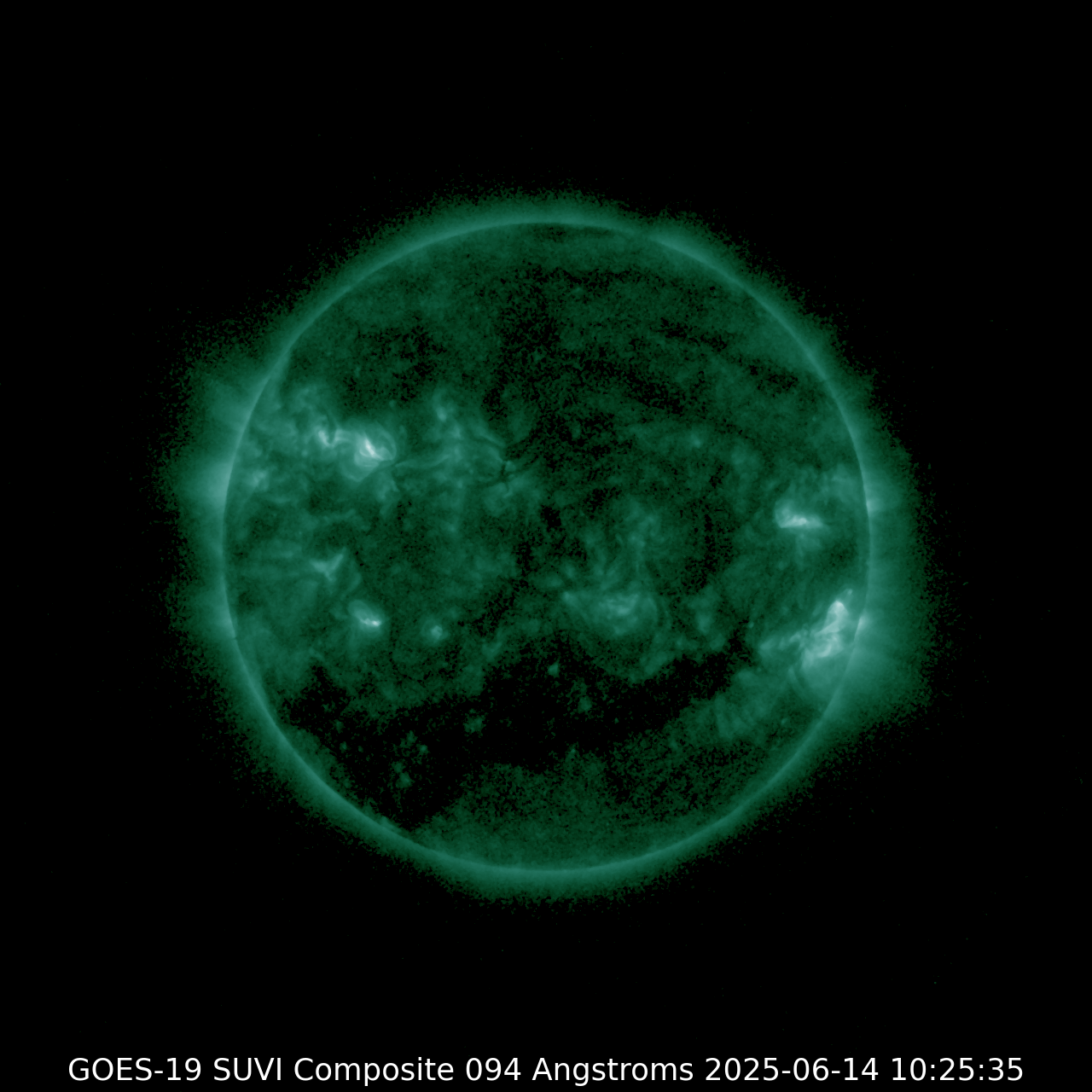






 94 Angstroms
94 Angstroms
 131 Angstroms
131 Angstroms
 171 Angstroms
171 Angstroms
 195 Angstroms
195 Angstroms
 284 Angstroms
284 Angstroms
 304 Angstroms
304 Angstroms
 Thematic Map
Thematic Map
The four spacecraft in the GOES-R series each carry a sophisticated extreme ultraviolet (EUV) telescope called the Solar Ultraviolet Imager (SUVI). This telescope allows forecasters to monitor the Sun’s hot outer atmosphere, or corona. EUV photons are created in the million-degree plasma of the corona and are not visible from the ground, due to the absorption of the Earth’s atmosphere. Observations of solar EUV emission aids in the early detection of solar flares, coronal mass ejections (CMEs), and other phenomena that impact the geospace environment.
EUV photons travel at the speed of light and are the first indication we receive at Earth of solar magnetic eruptions and associated flares. These high-energy photons cause changes to the Earth’s ionosphere and can result in significant degradation of radio communications, including complete black outs at some frequencies. The impacts begin only 8 minutes (time for light to travel from the Sun to Earth) after a flare.
The early warning given when SUVI observes a solar eruption comes at least 15 hours before the associated CME arrives at Earth. This allows forecasters at SWPC to issue the appropriate watches, warnings, and alerts for geomagnetic storms.
The SUVI telescopes are mounted on the Sun-pointing solar array gimbals of the GOES weather satellites. These satellites are in geosynchronous orbits that allow continuous solar viewing, 24 hours/day, 7 days/week. The only exception to this is around equinox dates when the GOES satellites enter Earth's shadow for up to one hour each day.
Each SUVI collects a solar EUV image several times per minute, and the exposure settings follow a sequence that is optimized to observe three primary phenomena as they are reflected in the Solar atmosphere: coronal structures, active regions, and solar flares.
SWPC presents the images and animations of the GOES SUVI instruments in near-real-time, and uses them in analyzing events and in issuing space weather watches, warnings, and alerts.
SUVI has been providing operational observations since March 11, 2020. Earlier instruments - the Solar X-ray Imagers (SXIs) on GOES 12 through 15 - made observations from December 15, 2004 to March 11, 2020. There are some gaps in the data from different satellites and more details on the chronology can be found at: Solar Imagery.
SUVI documentation and data processed at the National Centers for Environmental Information (NCEI) are available at: https://www.ncei.noaa.gov/products/goes-r-solar-ultraviolet-imagers-suvi. Original operational versions of SUVI images are also available through NCEI at: https://www.ncei.noaa.gov/data/goes-r-series-l2-operational-space-weather-products/.